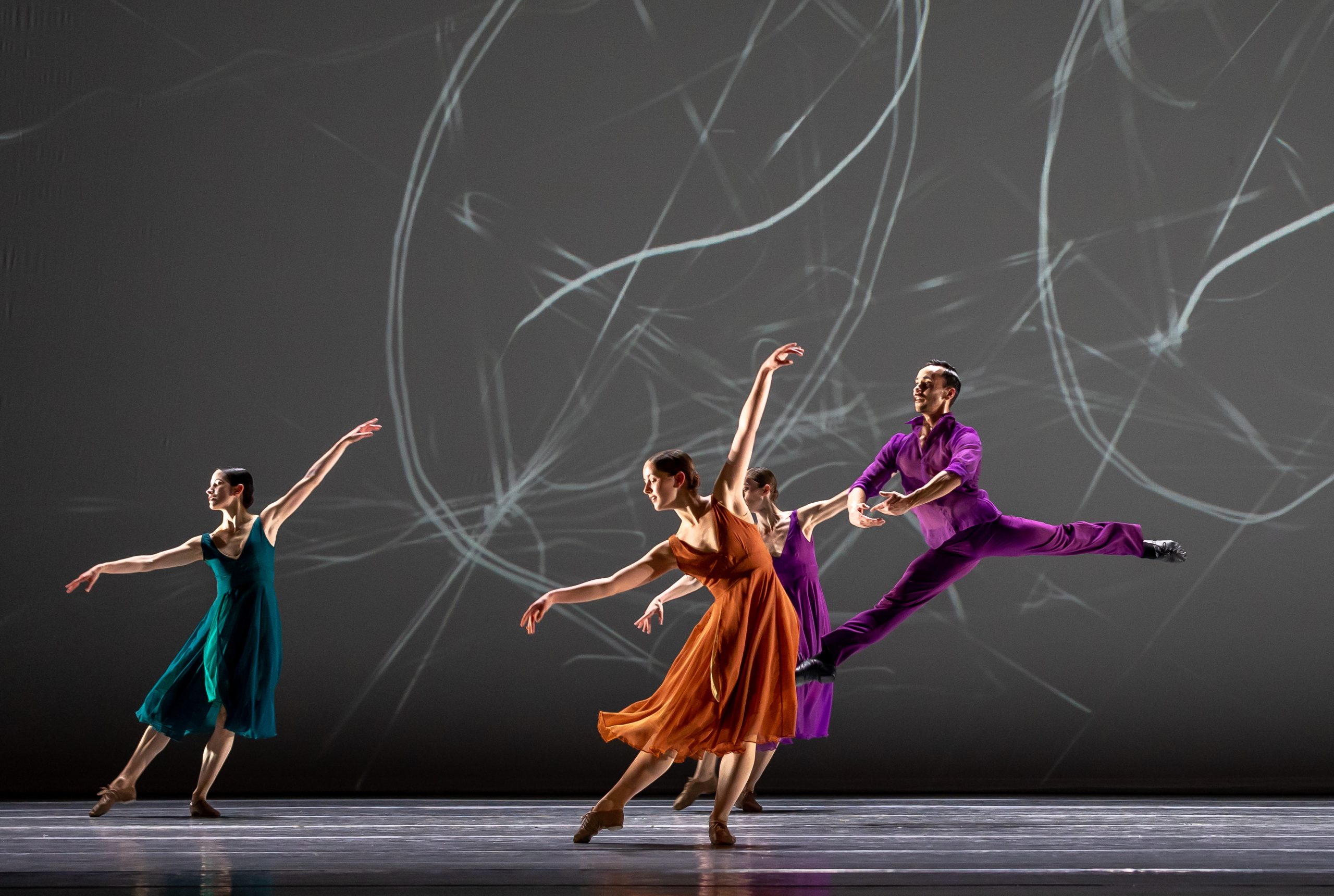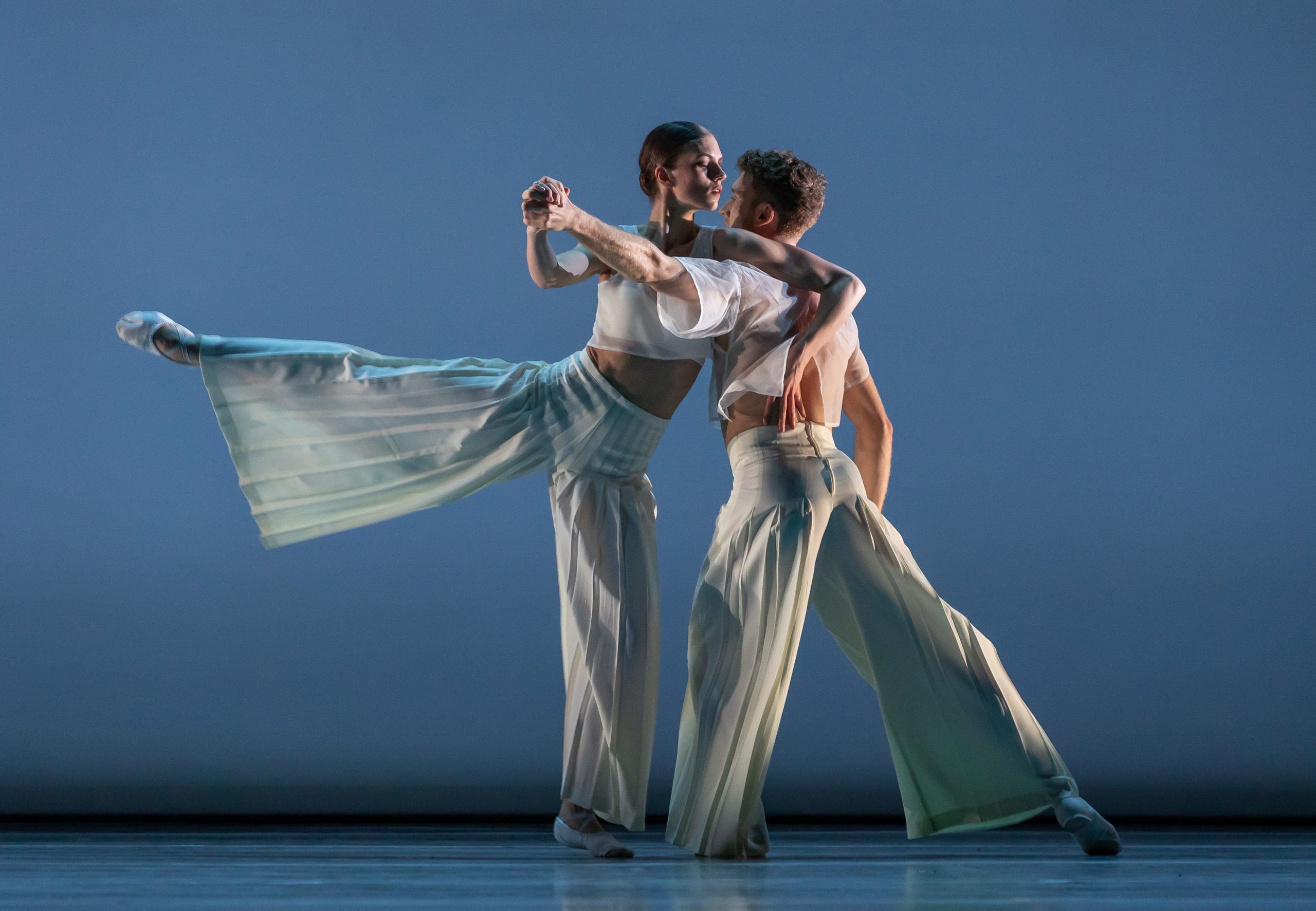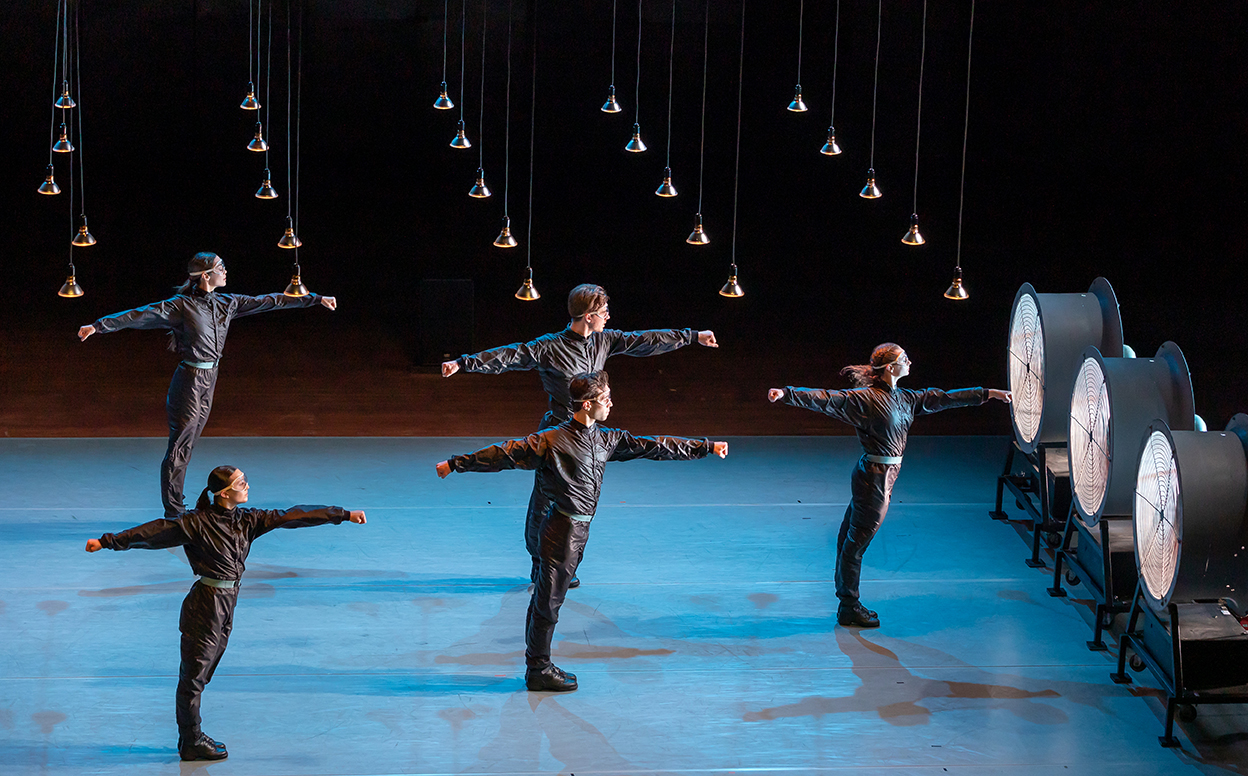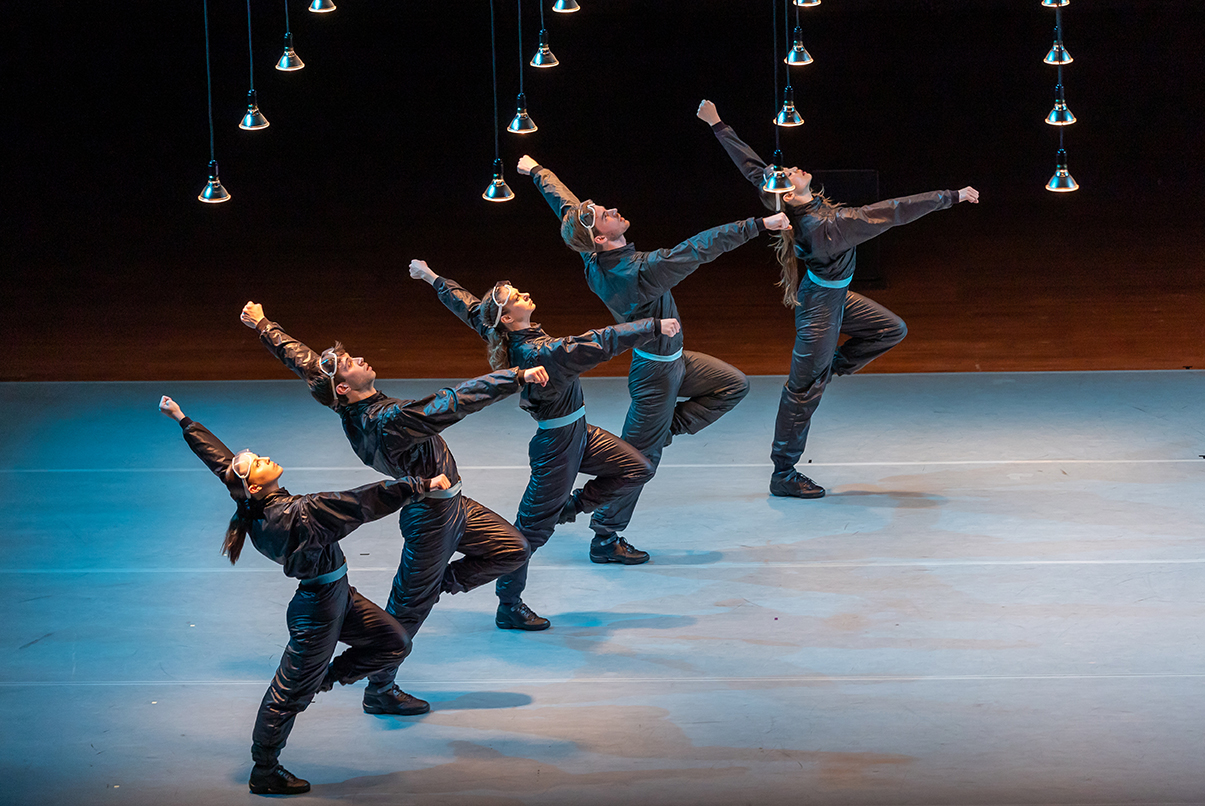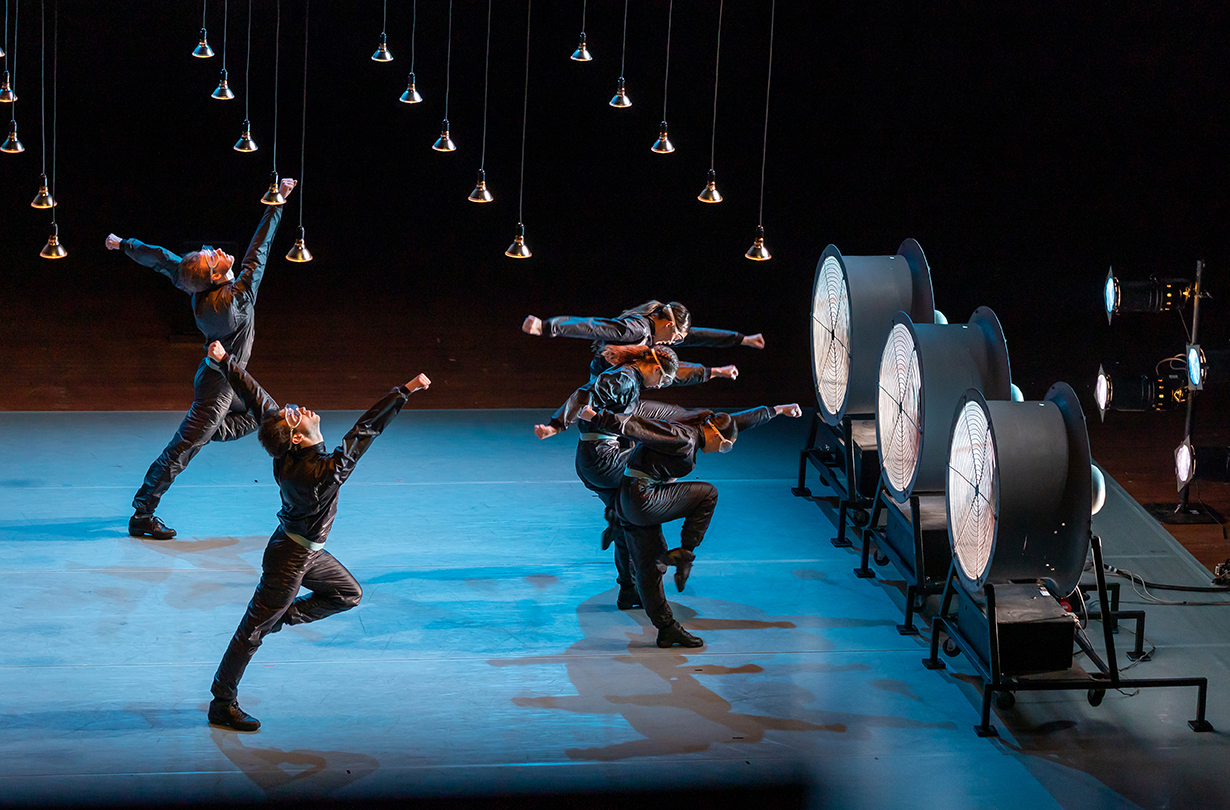Dans Magazine - KEEP COUNTING
Unique opportunity
April 14, 2025
by: Jacq. Algra
This spring, the renowned American choreographer Lucinda Childs created a new piece with the dancers of Introdans. A milestone: Notes of Longing is the tenth work in the company’s repertoire. At the same time, other colleagues are touring with Typhoon by Hungarian-Dutch choreographer Krisztina de Châtel. Artistic director Roel Voorintholt is thrilled. “It’s truly special that I get to do this now.”
“Something happens to you when you watch Childs’ choreography,” says Voorintholt. “It’s very aesthetic and meditative. At Introdans, we take a broad approach to our repertoire. I’ve been following my own instincts for over forty years when it comes to the choreographers and works I choose. Minimal dance creations calm me. You’re fascinated and feel a sense of release. I experience it myself, and I hear from the audience that they find it relaxing too. That’s nice in these chaotic times.”
A Long-Term Relationship
Almost twenty years ago, the special relationship between the Arnhem-based company and the choreographer began. Voorintholt had seen a performance of Concerto and was captivated. “That’s when I took a leap of faith,” he says in a 2013 documentary about the collaboration. Childs’ response to his request to rehearse the piece in Arnhem was immediately positive. “What I find so remarkable is that Introdans now performs more of her works than any other company in the world—ten in total. And five of those were created specifically for our dancers.”
Counterforce
Krisztina de Châtel: “I created Typhoon in 1986, when I still had my own company. I really wanted to revive it, so I called Roel Voorintholt. He was immediately enthusiastic and said: ‘We’re doing it!’ His dancers have been performing Childs’ work for years and are used to minimal dance. He also has a great production team, which is ideal. There’s a tour of thirty-seven performances across the country, so I’m very satisfied. It’s a co-production, because I wanted to bring some of my former dancers to help teach it. Introdans has excellent dancers—they’re technically strong—and I’ve clearly explained what to focus on in this piece. The arms have to move like propellers; it’s not about being graceful. The counting is definitely not easy. But the focus isn’t on pretty steps—it’s about patterns and structures.” She laughs: “That’s the essence—beauty gets blown away!”
In De Châtel’s choreography, dancers face physical elements like a high earthen wall, steel spheres, or sliding plexiglass panels. In Typhoon, they have to stand firm—with clenched fists and feet grounded—despite strong headwinds. These winds are generated by large machines on the right side of the stage, gradually overpowering Simeon ten Holt’s piano music in Canto Ostinato. “It’s about counterforce. Counterforce in general: as a choreographer, as a person, you constantly face resistance. That wind could symbolize nature’s force, climate change, or political opposition. It’s anything that forces you to fight to reach your goal. As a dancer, you need to be aware of your own path and that of your fellow dancers. You have to stay 100% focused. If someone loses count, the whole structure collapses.”
Precise Patterns
Lucinda Childs launched her own performances in the 1960s in New York’s postmodern dance hub, Judson Church. In her 1964 solo Carnation, she created movements by manipulating everyday objects, including a set of scouring pads. It was all done in complete concentration and silence—Childs worked without music for the first twelve years of her career. That changed after her collaboration with Philip Glass and Robert Wilson on the opera Einstein on the Beach: from then on, musical compositions became the structural grid for her choreography. Over the years, she has created work for dance and opera companies around the world, to music by a wide range of composers including Beethoven, Frank Zappa, and the Dutch composer Harry de Wit. The through line has always been a minimalist approach: precise spatial patterns, based on simple movements repeated with subtle variations. Light-footed walking, casual jumps, and freely swinging arms are recurring elements, often performed in pairs.
Staying Connected
Although she always enters the studio with the choreography thoroughly prepared, Childs continues to enjoy the interaction with dancers. “I love dancers—they give me energy. It’s not about a particular type of dancer, but they need to be musical and focused.” Even now, as she celebrates her 85th birthday, she enjoys being back and working with both new and familiar dancers at the Arnhem-based company. In Notes of Longing, they dance to music from the album of the same name by Matteo Myderwyk. He accompanies several performances live, as does the Netherlands Youth Orchestra conducted by Jurjen Hempel. Childs: “His piano pieces are subtle and beautiful. Written in simple 3/4 or 4/4 time, yet full of emotion. I want to bring that emotion out through the dancers’ movement quality. But they must constantly know where they are in the music and stay connected. So yes, they really have to keep counting.”
Romantic Undertone
Giuseppe Calabrese has been dancing with Introdans for twelve seasons and has worked with Childs multiple times. How does he feel about it? “She has an incredibly mathematical mind—it blows you away. From the very first rehearsal, you sense that she has everything in her head: time signatures, phrases, patterns, structures. That’s the exciting part: as a dancer, you gradually uncover the patterns she’s designed. But what’s even more rewarding is her friendly and calm mindset. In Notes of Longing, there are duets with a romantic undertone—you could say that a bit of that longing from the title lives in our bodies. My duet with Elisa Rudolf starts like a flowing waltz. But then suddenly shifts into a high-energy section with rapid steps.” He laughs: “Very challenging. And you still have to keep counting the entire time!” Is there room for creative input from the dancers despite the choreographer’s detailed preparation? “Absolutely. She first shows what she envisions, and then you get to interpret it in your own way—within the given steps and structure, of course. There’s an interesting contrast in her work: beautiful full-body musicality next to a mathematically precise choreography. Because the steps are relatively simple and clear, the beauty of the music really shines through. I perform in three pieces, so these are intense evenings for me. But I’m glad to bring these stunning works to the stage, and I hope the audience feels like they can escape for a moment from everything going on in the world around us.”
In the Spotlight
The program ICOON presents a total of five works by Lucinda Childs. “The idea behind it is that I can showcase her signature style with this collection,” explains Voorintholt. “It’s a journey through time, starting in 1977 with the piece Interior Drama. At Musis Arnhem, we’ll close the tour with a combination of Typhoon followed by two works from the Childs program. It’s really very special that I get to do this now. I find it amazing, at this point in my career, to spotlight these two incredible women. It’s truly a rare opportunity. It’s fantastic that these women, at such an advanced age, are still so deeply engaged in their craft. And we get to experience that here in Arnhem: a ‘classic’ of Dutch contemporary dance and a world premiere by a global icon.”
